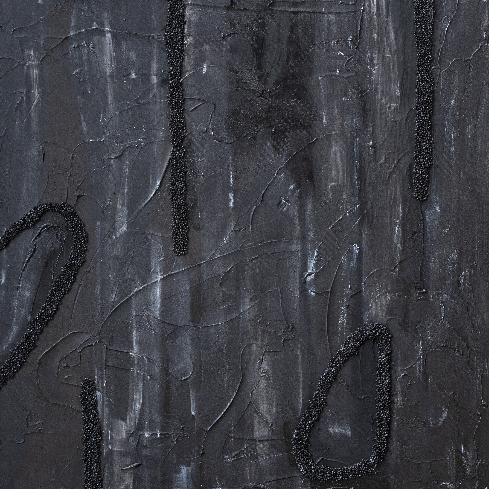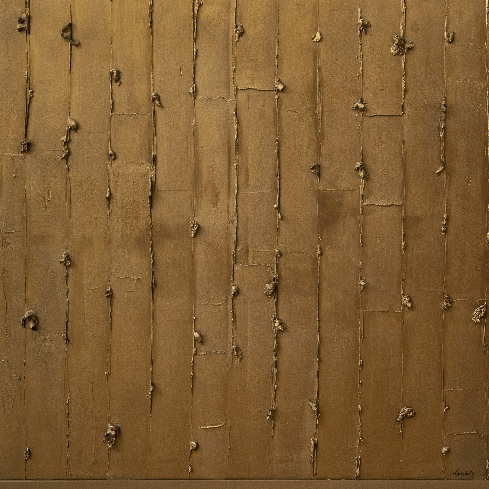
Guendalina Dorata
Artist - Italy
THE CHARM OF SUBTRACTION
The works of Guendalina Dorata express an aesthetic that, on one hand, transcends the forms of the past and, on the other, represents a stratification of traditional painting in a creative flow that proceeds not by accumulation but by subtraction.
This is the source of the subtle charm of works that never fully reveal themselves, leaving it to the viewer to attribute meaning to that which is merely hinted at.
She says more by saying less.
Unlike what normally happens in an era overloaded with signs such as ours, often built up through constant accumulation, her paintings stand out for their pursuit of essence, colour, meaning and signals: a formal synthesis that gravitates almost weightlessly in the space-time of contemporary art.
She uses a technique that starts with acrylic paint on canvas, often supplemented with delicate pastel strokes. Her works also contain materials, such as plaster applied to the canvas with a putty knife to form soft, plastic reliefs, fabric inserts overlaid on the canvas, or even fragments of aluminium, copper, or pieces of twine and wood. These could almost be fossils scattered across the landscape of a distant planet at the edges of the universe, bearing witness to the rarefied presence of ancient civilisations.
On the other hand, they are also symbols of the reclamation of craftsmanship, and of a return to the ancient meaning of the artist as artifex.
This is why her art is non-figurative but not abstract. Though she does not portray reality, the aesthetic dimension of her work is not detached from it. It is present inside things, that is to say inside life.
In the same way, a careful study of Guendalina Dorata’s works reveals the lessons of masters like Cy Twombly, especially in the harmonious shift between drawing and painting. Or those of Jannis Kounellis in their use of elements once designated as “poor” and in their reduction of the colour palette, going as far as to affirm black as total colour.
And we can also see the influence of the great masters of Sho-do, the Japanese art of calligraphy, where the brushstrokes in sumi ink become an aesthetic element in their own right, even before they express their meaning by completing the ideogram.
Once again, however, none of this is shown. It is intuited, discovered. It resonates.
You get a peculiar sensation when looking at an artwork by Guendalina Dorata: suddenly, you are no longer in a hurry. Time and space seem to dilate, urging you to linger, to listen before seeing.
Guendalina Dorata is a Roman artist, but her art is full of multicultural layers that sublimate into an evocative synthesis encompassing the diverse stimuli gathered over time across many latitudes, although these are not shown.
What makes a piece a work of art is not whether or not it has been placed in a category (since this is abstract), so much as whether or not it has the ability to touch those intimate chords that other things cannot reach. Beyond that, explanations are unnecessary. Art speaks. Guendalina Dorata’s art possesses a poetic purity capable of telling endless stories, not by showing but by suggesting. It touches us profoundly.
In the words of Horace, ut pictura poësis. In the works of Guendalina Dorata, there is always poetry that becomes painting.
Lamberto Petrecca


